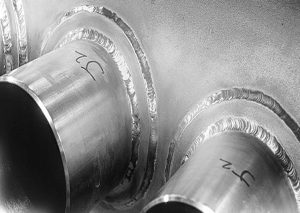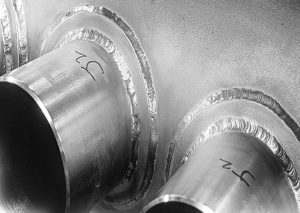Zirconium and zirconium alloys have excellent corrosion resistance to acid and alkali, and even surpass niobium, titanium and other metals in some media. Therefore, zirconium and zirconium alloys are gradually used as structural materials such as equipment and pipelines in the chemical industry with strong corrosion resistance due to their good corrosion resistance in recent years.
Due to the high-temperature chemical activity, zirconium and zirconium alloys can react with various elements in the air at high temperature, thus damaging their mechanical properties. Therefore, in the process of zirconium and zirconium alloy welding, the key to ensuring the quality of welding is to select a clean operating environment and strengthen the isolation and protection of welding seams and parts in the heat-affected zone.
Basic properties of zirconium and zirconium alloys
Zirconium and zirconium alloy materials mainly include R60702, R60704, and R60705. Zirconium and zirconium alloys have good welding properties and stable chemical properties at room temperature. However, its high-temperature chemical properties are very active, and it has a strong affinity for the pollution of oxygen, nitrogen, hydrogen and dust and humidity in the operating environment.
The excellent corrosion resistance of zirconium and zirconium alloys comes from the oxide film formed on the surface and depends on the integrity and firmness of the oxide film. When zirconium and zirconium alloy absorb a certain amount of oxygen, nitrogen, hydrogen, and other gas impurities, their mechanical properties and corrosion resistance will decrease sharply. Therefore, strengthening the protection of the surface of environmental dust, humidity and heat affected area and the back of the welding seam is the key element of quality control in the welding process.

Factors influencing the welding quality of zirconium and zirconium alloy
- The tendency of weld cracks
Due to the low thermal expansion coefficient of zirconium and zirconium alloy, the volume change caused by thermal deformation and phase change is very small, and the content of sulfur, phosphorus, carbon and other impurities is very low, there is no obvious trend of cracks in the welding process. However, when the welding seam absorbs a certain amount of oxygen, nitrogen and hydrogen gas impurities, the performance of the welding seam and the heat-affected zone will become brittle. If there is stress in the welding seam, cold cracks will occur.
At the same time, hydrogen atoms have the property of diffusing and aggregating to the high-stress parts in the heat-affected zone with lower temperature, which leads to the formation of relatively weak links in these parts, which may lead to the generation of welding delay cracks.
- Selection of welding materials
The filler wire for zirconium and zirconium alloy welding should be selected according to the principle of matching the base material composition. The surface of welding wire shall not have heavy skin, crack, the oxidation phenomenon and metal or non-metal inclusion defects. Besides, the welding wire should be cleaned and dried before use.
- Selection of protective gas
Argon arc welding with tungsten electrode of zirconium and zirconium alloy shall adopt high purity argon with 99.999% purity and the impurity content shall meet the requirements of GB/T4842 current standards.
Due to the extremely high requirements on the purity of welding protective gas, continuous gas charging is required during the welding process, and the gas cannot be interrupted in the process; otherwise, argon charging needs to be replaced again. Therefore, the direct gas supply method using ordinary argon in a single bottle cannot meet the protection requirements. It is necessary to increase the gas supply capacity of multiple argon bottles in series and satisfy the simultaneous operation of multiple welders through the air separation cylinder.
Please visit http://www.samaterials.com for more information.
